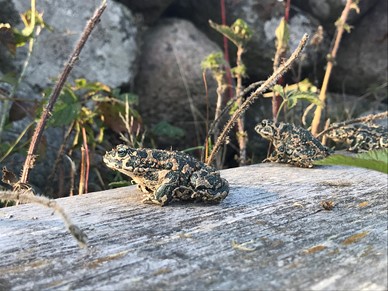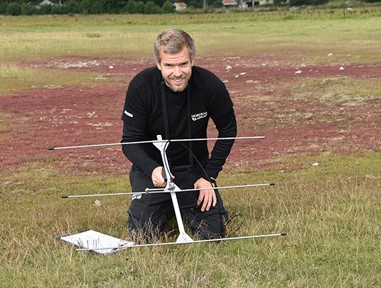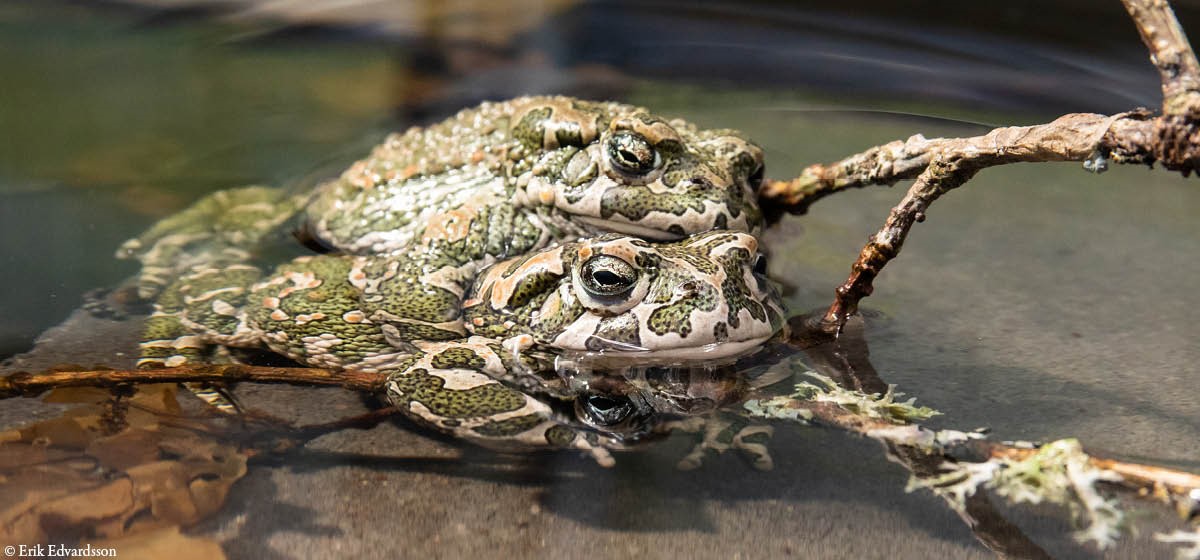Green toad conservation
The green toad was formerly common in coastal areas in southern and southeastern Sweden, but is now only found in a few and isolated places in Skåne and Blekinge, with very little opportunity for natural spread. The species is today considered Sweden's rarest and most endangered amphibian, and is classified on the Swedish red list as Vulnerable.
The green toad has declined steadily in Sweden throughout the 20th century, and the reasons for the species' decline are many. The species' habitat has been destroyed to, among other things, make room for forestry and farmland, and reduced grazing on coastal meadows has resulted in overgrowth. Small ponds have been filled in or diked, the groundwater has sunk in several places and the water quality has also deteriorated as a result of eutrophication.
What we do at Nordens Ark
Nordens Ark has for many years been involved in the conservation of the green toad through breeding, rearing and release. In previous years, individuals have been released in several places in Skåne, Blekinge, Öland and Gotland, but since 2009 the releases have been concentrated in Öland. Work takes place in collaboration with the County Administrative Board in Kalmar County within the framework of the action program for threatened species.
Breeding of green toad takes place in Nordens Ark's closed breeding facility, where it is managed completely separately from other operations with high biosecurity requirements. This is to minimize the risk of infection being brought into the breeding premises. Every year, 10,000 individuals are raised on Nordens Ark, which are then released into the wild. Releases are made at different ages, where tadpoles, newly metamorphosed and adult toads are released. By releasing toads of different ages, we replenish the generations that have disappeared, which hopefully speeds up the re-establishment.

Toad equipped with radio transmitter.
Before release, the toads are tested and declared healthy with regard to the fungal diseases chytridiomycosis and ranavirus, which largely cause amphibian deaths worldwide. The releases are mainly concentrated on the southern tip of Öland and a bird reserve near Högbyhamn on the north-western side of the island. At the release sites, wintering areas have been created to ensure that the toads survive the winter. In addition, restorations have also taken place with new shallow playing waters.
Kristofer Försäter from Nordens Ark searches for toads with radio telemetry.
News from the project - March 2024
In 2023, a survey of green toads was made on beach meadows within the Ottenby nature reserve on Öland. The survey showed very positive results, with many documented matings and playing males. This shows that our hard work together with the Kalmar County Administration to re-establish a population of the green toad on Öland, has yielded results. However, the survival of the species is not yet guaranteed and it is important that we now continue with frequent releases on Öland.



